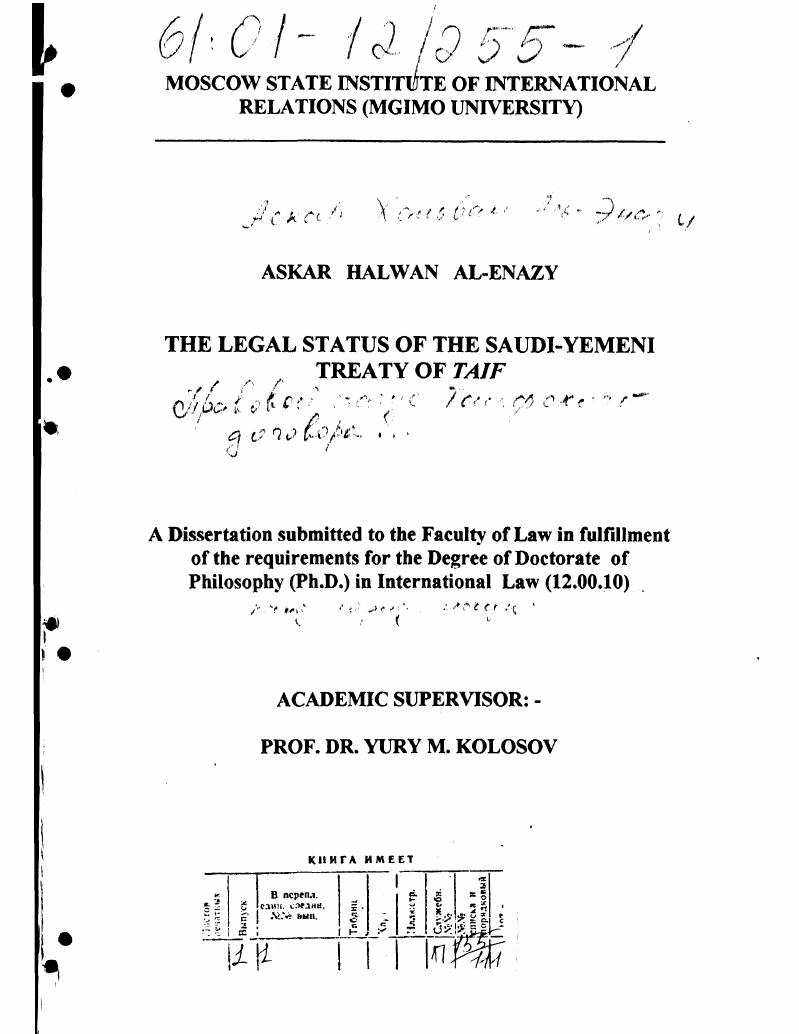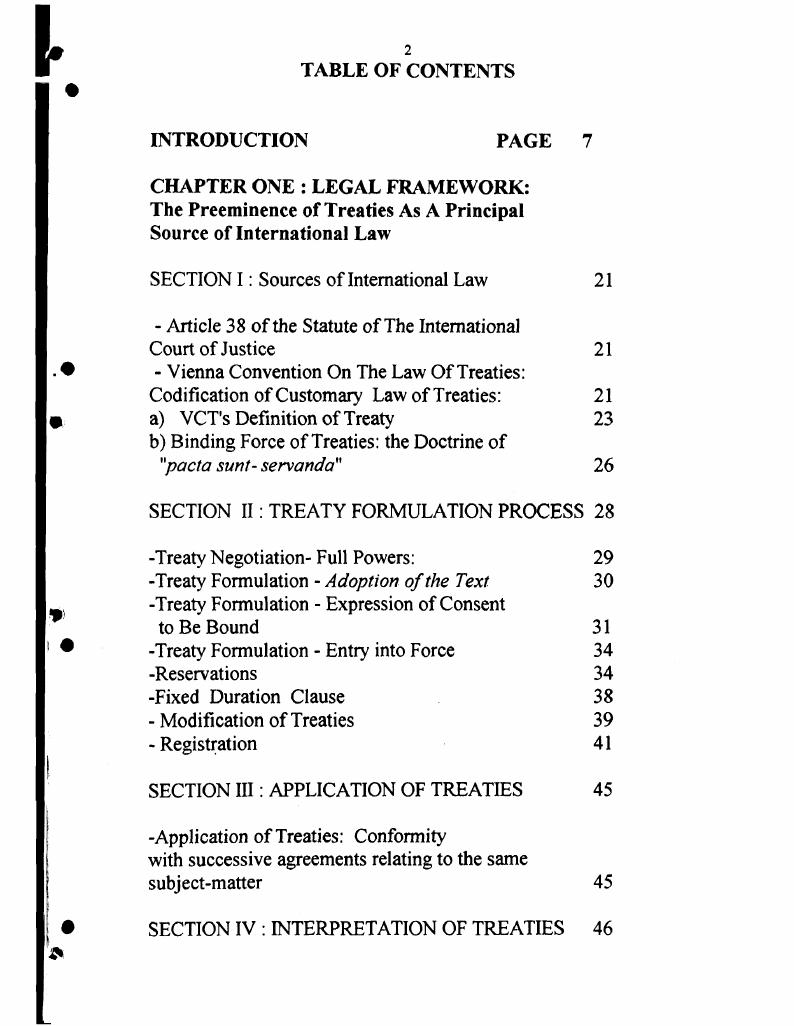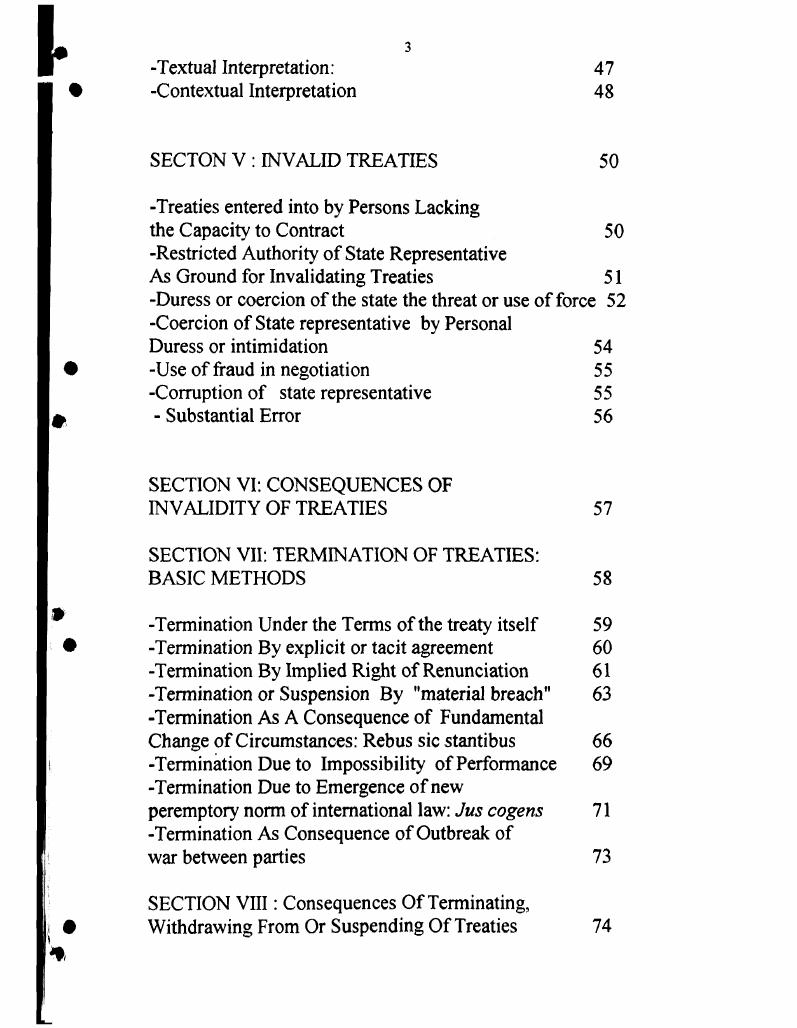Правовой статус Таифского договора между Королевством Саудовской Аравии и Республикой Йемен

- Автор:
Аскар Хальван Аль-Энази
- Шифр специальности:
12.00.10
- Научная степень:
Кандидатская
- Год защиты:
2000
- Место защиты:
Москва
- Количество страниц:
252 с.
Стоимость:
700 р.250 руб.
до окончания действия скидки
00
00
00
00
+
Наш сайт выгодно отличается тем что при покупке, кроме PDF версии Вы в подарок получаете работу преобразованную в WORD - документ и это предоставляет качественно другие возможности при работе с документом
Страницы оглавления работы


Рекомендуемые диссертации данного раздела
| Название работы | Автор | Дата защиты |
|---|---|---|
| Российская собственность за рубежом : Правовые пробл. правопреемства и управления | Харченко, Виктория Валерьевна | 1997 |
| Влияние права Европейского Союза на международный коммерческий арбитраж | Юрьев, Евгений Евгеньевич | 2008 |
| Нотариат : Аспекты международного и национального права | Дударев, Александр Владимирович | 2000 |